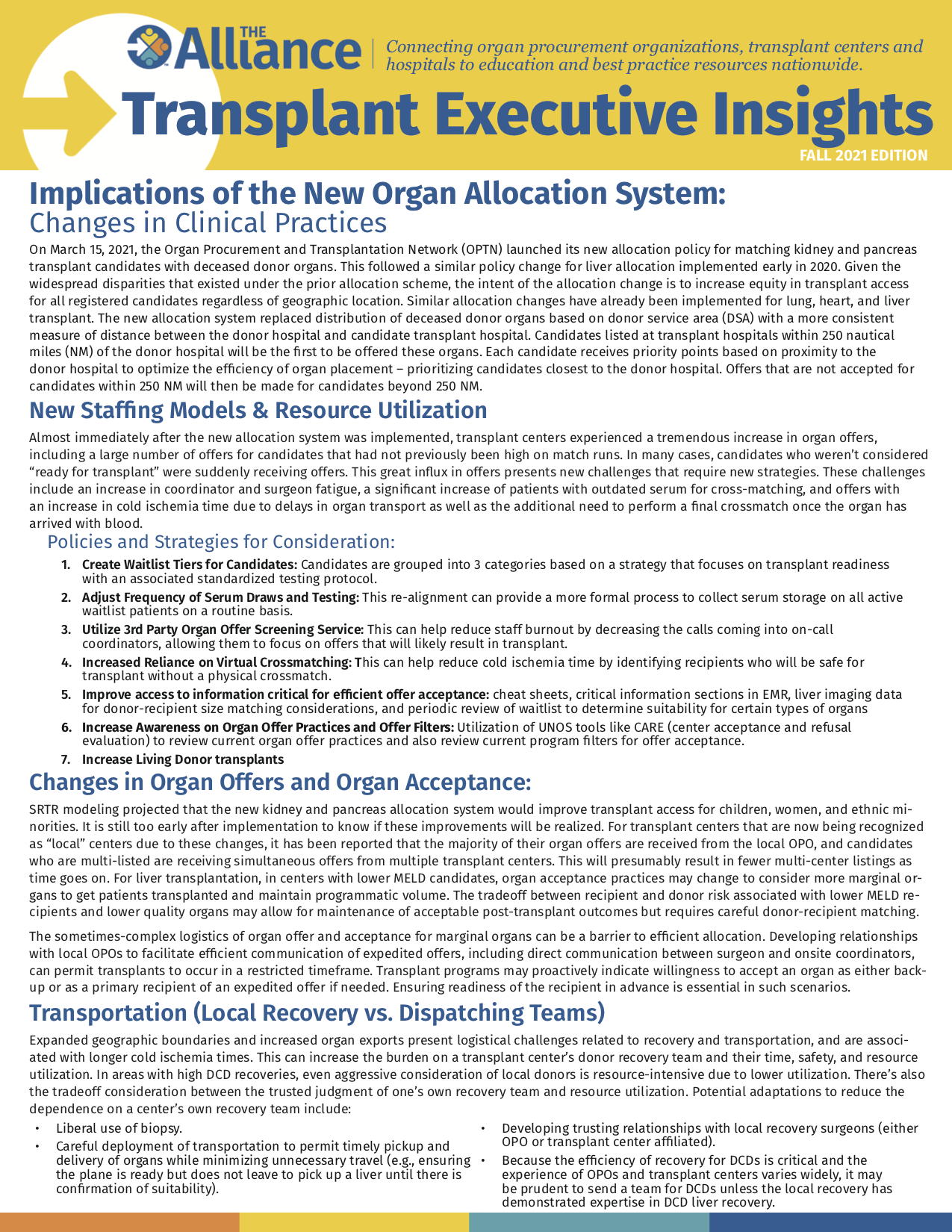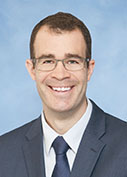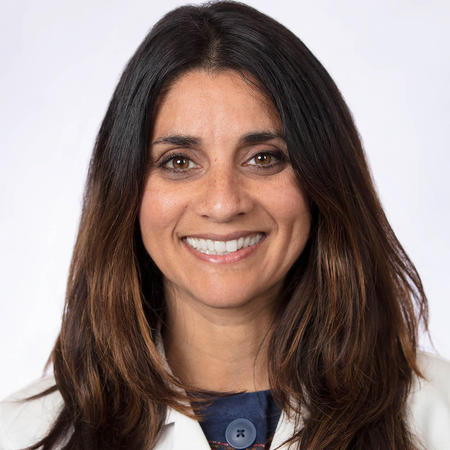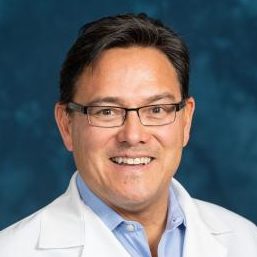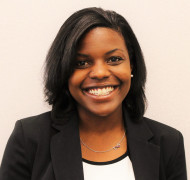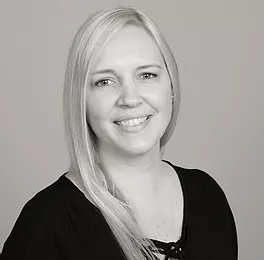On March 15, 2021, the Organ Procurement and Transplantation Network (OPTN) launched its new allocation policy for matching kidney and pancreas transplant candidates with deceased donor organs. This followed a similar policy change for liver allocation implemented early in 2020. Given the widespread disparities that existed under the prior allocation scheme, the intent of the allocation change is to increase equity in transplant access for all registered candidates regardless of geographic location. Similar allocation changes have already been implemented for lung, heart, and liver transplant. The new allocation system replaced distribution of deceased donor organs based on donor service area (DSA) with a more consistent measure of distance between the donor hospital and candidate transplant hospital.
Candidates listed at transplant hospitals within 250 nautical miles (NM) of the donor hospital will be the first to be offered these organs. Each candidate receives priority points based on proximity to the donor hospital to optimize the efficiency of organ placement – prioritizing candidates closest to the donor hospital. Offers that are not accepted for candidates within 250 NM will then be made for candidates beyond 250 NM.
New Staffing Models & Resources Utilization
Almost immediately after the new allocation system was implemented, transplant centers experienced a tremendous increase in organ offers, including a large number of offers for candidates that had not previously been high on match runs. In many cases, candidates who weren’t considered “ready for transplant” were suddenly receiving offers. This great influx in offers presents new challenges that require new strategies. These challenges include an increase in coordinator and surgeon fatigue, a significant increase of patients with outdated serum for cross-matching, and offers with an increase in cold ischemia time due to delays in organ transport as well as the additional need to perform a final crossmatch once the organ has arrived with blood.
Policies and Strategies for Consideration:
- Create Waitlist Tiers for Candidates: Candidates are grouped into 3 categories based on a strategy that focuses on transplant readiness with an associated standardized testing protocol.
- Adjust Frequency of Serum Draws and Testing: This re-alignment can provide a more formal process to collect serum storage on all active waitlist patients on a routine basis.
- Utilize 3rd Party Organ Offer Screening Service: This can help reduce staff burnout by decreasing the calls coming into on-call coordinators, allowing them to focus on offers that will likely result in transplant.
- Increased Reliance on Virtual Crossmatching: This can help reduce cold ischemia time by identifying recipients who will be safe for transplant without a physical crossmatch.
- Improve access to information critical for efficient offer acceptance: cheat sheets, critical information sections in EMR, liver imaging data for donor-recipient size matching considerations, and periodic review of waitlist to determine suitability for certain types of organs
- Increase Awareness on Organ Offer Practices and Offer Filters: Utilization of UNOS tools like CARE (center acceptance and refusal evaluation) to review current organ offer practices and also review current program filters for offer acceptance.
- Increase Living Donor transplants
Changes in Organ Offers and Organ Acceptance
SRTR modeling projected that the new kidney and pancreas allocation system would improve transplant access for children, women, and ethnic minorities. It is still too early after implementation to know if these improvements will be realized. For transplant centers that are now being recognized as “local” centers due to these changes, it has been reported that the majority of their organ offers are received from the local OPO, and candidates who are multi-listed are receiving simultaneous offers from multiple transplant centers. This will presumably result in fewer multi-center listings as time goes on.
For liver transplantation, in centers with lower MELD candidates, organ acceptance practices may change to consider more marginal organs to get patients transplanted and maintain programmatic volume. The tradeoff between recipient and donor risk associated with lower MELD recipients and lower quality organs may allow for maintenance of acceptable post-transplant outcomes but requires careful donor-recipient matching.
The sometimes-complex logistics of organ offer and acceptance for marginal organs can be a barrier to efficient allocation. Developing relationships with local OPOs to facilitate efficient communication of expedited offers, including direct communication between surgeon and onsite coordinators, can permit transplants to occur in a restricted timeframe. Transplant programs may proactively indicate willingness to accept an organ as either backup or as a primary recipient of an expedited offer if needed. Ensuring readiness of the recipient in advance is essential in such scenarios.
Transportation (Local Recovery vs. Dispatching Teams)
Expanded geographic boundaries and increased organ exports present logistical challenges related to recovery and transportation, and are associated with longer cold ischemia times. This can increase the burden on a transplant center’s donor recovery team and their time, safety, and resource utilization.
In areas with high DCD recoveries, even aggressive consideration of local donors is resource-intensive due to lower utilization. There’s also the tradeoff consideration between the trusted judgment of one’s own recovery team and resource utilization. Potential adaptations to reduce the dependence on a center’s own recovery team include:
- Liberal use of biopsy.
- Developing trusting relationships with local recovery surgeons (either OPO or transplant center affiliated).
- Careful deployment of transportation to permit timely pickup and delivery of organs while minimizing unnecessary travel (e.g., ensuring the plane is ready but does not leave to pick up a liver until there is confirmation of suitability).
- Because the efficiency of recovery for DCDs is critical and the experience of OPOs and transplant centers varies widely, it may be prudent to send a team for DCDs unless the local recovery has demonstrated expertise in DCD liver recovery.





